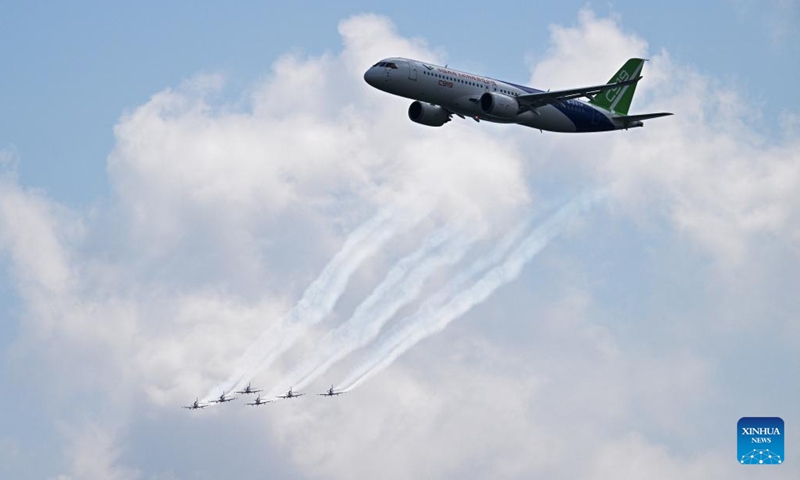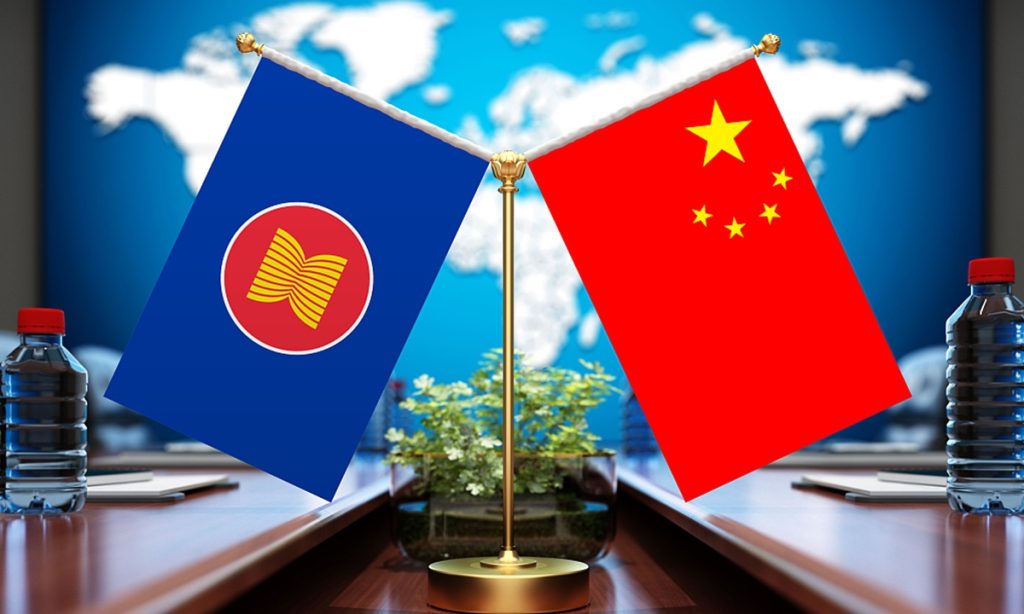China’s home-developed C919, ARJ 21 debut at Singapore Airshow, showing nation’s high-end manufacturing prowess

Two C919 and three ARJ 21 jets, which were developed by Commercial Aircraft Corp of China (COMAC), debuted at the Singapore Airshow on Tuesday, using various formats and performances, COMAC said in a statement sent to the Global Times.
On the sidelines of the Singapore Airshow, China's Tibet Airlines and COMAC signed a contract for 40 high-altitude C919 planes and 10 ARJ 21 orders. Henan Civil Aviation Development & Investment Group ordered six ARJ 21 planes including fire-fighting aircraft, medical use aircraft and emergency rescue aircraft, COMAC said in a separate statement sent to the Global Times.
International debut of China's home-developed planes, together with recent achievements in the high-end manufacturing sector, underscores the country's continuous efforts and determination in bolstering its high-tech development, which will significantly propel China's economic progress in 2024, observers said.
The large-scale participation showcased China's strong confidence in its commercial aircraft. China is able to manufacture and start the market operation of domestic commercial aircraft, Wang Yanan, chief editor of Beijing-based Aerospace Knowledge magazine, told the Global Times on Tuesday.
The achievement is also a major progress in the international sense, since only a few countries can manufacture commercial aircraft, Wang said.
Wang noted that the Singapore Airshow is an opportunity to demonstrate China's manufacturing strength in high-tech products, while China's participation also showcased the country's strong willingness to explore the international market.
The Singapore Airshow, which kicked off on Tuesday and lasts until Sunday, is the largest aviation event in Asia.
The C919 large passenger jet, which can seat up to 192 passengers and fly up to 5,555 kilometers, is equipped with advanced aerodynamic design, propulsion systems and materials, leading to lower carbon emissions and higher fuel efficiency.
A total of four C919 jets have been delivered and safely carried more than 110,000 passengers since the plane made its maiden commercial flight on May 28, 2023. Mass production and the development of the series are both going smoothly, per the COMAC statement.
This year will be a key period to speed up mass production and deliveries of the C919, and for COMAC to integrate the industry, supply and innovation chains for the airliner while expanding in the overseas market, Qi Qi, an independent market watcher, told the Global Times.
The ARJ21 has a passenger capacity of up to 97 and a maximum flight span of 3,700 kilometers. It has good takeoff and landing performances with crosswind resistance ability at high elevations and in high temperatures.
Since the ARJ 21 was put into commercial operation in June 2016, a total of 127 jets have been delivered, and they have safely carried more than 11 million passengers. Among them, two planes are operated by Indonesia's TransNusa Airlines on four routes based in Jakarta to five cities, and they have transported more than 100,000 passengers, according to COMAC.
In December 2023, the C919 and the ARJ21 made their first appearance in the Hong Kong Administrative Region, marking the first time for the C919 to leave the Chinese mainland.
China has achieved fruitful results in the high-end manufacturing sector amid its rapid development and upgrading, and the continuing momentum will help the nation retain its leading position in the global competition, Pan Helin, a professor at Zhejiang University's International Business School, told the Global Times on Tuesday.
The development of the high-end manufacturing sector will play a vital role for advancing China's economy this year, as it is a major representation of the new productive forces, Pan said. He added that the sector's development will also drive the development of related industry chains and create industrial agglomeration effects.
China's first domestically produced large cruise ship, Adora Magic City, carried around 8,000 passengers in two separate voyages during the just-passed Spring Festival holidays, which is another vivid example of the country's manufacturing prowess.
China has demonstrated its "strong momentum and broad prospects" in the development of new productive forces, the backbone of which are strategic emerging industries and industries of the future, Cai Wei, chief strategy officer of KPMG China Advisory, told the Xinhua News Agency in a recent interview.
The share of strategic emerging industries, such as new energy, high-end equipment and biotechnology, in China's GDP surpassed 13 percent in 2022 from 7.6 percent in 2014, according to Cai. China plans to raise the level to 17 percent by 2025, per the Xinhua report.
